Rooms of Nicholas II - Working Study
English | Español | FrançaisEpicenter of Romanov Rule
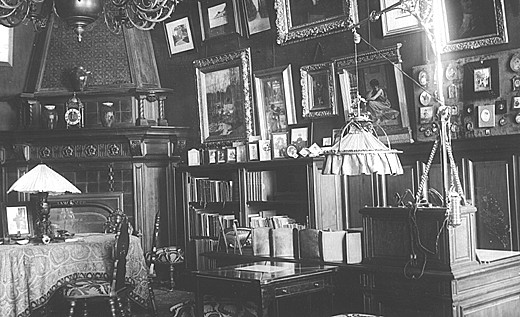
Nicholas had lived in the Alexander Palace on and off his whole life. Nicholas was born in his mother Maria's bedroom in the right wing of the palace. While he was a child his family stayed at the palace frequently and Nicholas had a personal an attachment for the palace and its' vast park. There were lots of places to visit in the park like the Imperial Farm, the kennels and the Llama House. His mother also was fond of the Alexander Palace for different reasons - she found it to be a great place for entertaining. Its' location in Tsarskoe Selo, the preferred summer resort of the St. Peterburg aristocracy, meant many potential visitors and certain invitations to balls and dinners. Maria Feodrovna loved parties and encouraged her husband to schedule long periods of time in the palace every year. The opposite of his wife, Alexander III much preferred Gatchina for its' relative isolation and the lack of social life there. As they got older Alexander and his wife spent less and less time in the Alexander Palace and more time at Gatchina.

Above: The divan in Nicholas's Working Study. The small chair and table at left were for the young Tsarevitch when visiting his father.
Aside from Nicholas' father, his grandfather and great-grandfather had also all had lived at the Alexander Palace and many reminders of their lives were to be found everywhere in the palace
Over the years, as each succeeding generation of Romanovs had passed the palace on to the next as a part of the family patrimony, rooms went out of service - the personal rooms of each Tsar were left intact as memorials, preserved with all of their furnishings and intimate items untouched. This meant that portions of the palace were closed up and locked, and to the younger family members these rooms must have been exciting and mysterious places indeed. When the palace became Nicholas and Alexandra's home they spent time going through these locked up rooms and storage halls for things to use to redecorate their rooms. This must have certainly been an odd experience for Nicholas for virtually every piece of furniture and objet d'art had a history attached to it connected with some member of his family.
Nicholas was a man of conservative tastes in his surroundings - he preferred the old and familiar; rooms that were small and modest were his choice. He was embarrassed by ostentatious or trendy surroundings. Such was the environment in which he had been raised. His father had brought his children up in embarrassingly small rooms with low ceilings at Gatchina Palace and in rooms not much larger at the Anichkov Palace in St. Petersburg. Alexander III made sure his children were taught to set an example, to personally do with less when it came to clothes and living quarters. While this may have made Alexander III feel good, it did nothing to meet the expectations of the people and the aristocracy - who expected their Great Tsars to live like - well, EMPERORS. As a result, people who visited the Romanovs were often shocked to see the rulers of one-sixth of the globe living more like a factory manager's family in tiny cramped rooms filled with old well worn furniture.
When then time came to refurbish the Alexander Palace for his new family Nicholas naturally chose small rooms for himself and proceeded to recreate the comfortable atmosphere in which he had grown up. While he had mostly left the plans for the 'family rooms' to his wife and the designer Meltzer, he was very specific on what he wanted in his office and private bathroom. For his office he selected old furniture from other rooms of the palace, seeming to choose the heaviest and most uncomfortable pieces for himself.
When he was finished picking out the things he wanted, as well as the carpets and fabrics, Nicholas had created for himself a dark and masculine office with the then old-fashioned look of the 1880's. The Tsar's study had dark, hand-waxed walnut panelling and a walnut firepalace set with rich dark marble. Originally the walls were papered, but - perhaps because the paper was too bright - Nicholas had the paper removed and the walls painted a dark red. The floor was covered with oriental styled wall-to-wall British-made carpet, sewn together in strips.
As his father had done before him in his study, Nicholas installed a huge divan in his office covered in oriental carpets. When he worked or returned late to the palace he would sometimes sleep there. The divan was not used much to sit on. If one were a visitor to the Tsar he would direct you to sit in a chair either in front of his desk or at a nearby table.
Although the room had a deceptively simple and 'second-hand' look about it the materials used in it were of the richest kind. Nothing was too good for the Tsar. Since he didn't discuss prices until the bills arrived for approval, Nicholas left it to his decorator and the Marshall of the Court to present whatever they felt was appropriate. Mistakes could be made and it was something of an art to sense the "appropriate" range of fabrics, furnishings and carpets. Although Nicholas thought that by selecting items already in palace storerooms he was saving trouble and needless expense, once an item was selected, it went through a complete refurbishing so that often as not, the refurbishing was often more expensive than buying something new would have been. Everything done for the Tsar had to be of the finest and done exactly right - which meant that even the simple recovering of a chair could involve a dozen people and take several months to complete. This unnecessary bureaucracy drove Nicholas and Alexandra to distraction. The smallest things in the palace took forever to complete. Reporting a loose spring in a chair could involve endless inspections and paper work. Thus the Romanovs often left things to be done until they left the palace on their seasonal migration to Peterhof or the Crimea. After their departure, strictly supervised teams would examine all of the rooms with a fine toothed comb, testing all the sofas, looking for worn carpet, loose fittings or peeling paint. Nicholas was always impressed with what was accomplished while they were away - to his eye the palace always seemed fresh and new when they returned after three or four months elsewhere.

Above Nicholas desk in the New Study.
The Tsar's desk in his office was 'L' shaped and was covered with family pictures, folders, and all of the things needed by a Tsar to conduct the business of the Empire. Nicholas had his appointment books, calendars, pens and pipes all carefully and exactly arranged. Many of the frames and other objects were works-of-arts by suppliers to the Imperial Court - such as Fabergé.
As Nicholas was very particular about the arrangement of his desk and sure to notice even the slightest deviation from his habitual preferences, his valet kept a special map to ensure everything was always in its' proper place every day. Nicholas attempted to rationalize his almost neurotic obsession with the orderly care of his things by saying he simply wanted to be able to find everything when he needed it, even in the dark.
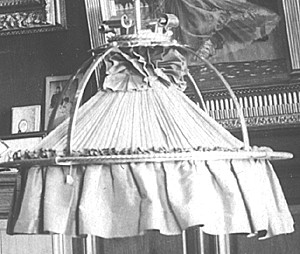 Left: The shade of the desk lamp.
Left: The shade of the desk lamp.
Over Nicholas' desk was an adjustable, gilt-bronze, swinging lamp from France. The desk chair was covered in green leather. Nicholas had almost identical, square shaped, desk chairs covered in the green leather in his study in each of his palaces.
Along the back wall were a series of oval miniatures of the Romanov Dynasty. The Tsar also had a large collection of miniatures on a padded panel behind his desk including paintings of his cousins the British Royal family. On the shelf on the far wall were Danish porcelain vases Nicholas bought on visits to his relatives there. There were many pictures in Nicholas's office, two of the most important were by the British Victorian painters Alma-Tadema and Poynter. There were also military pictures and exotic paintings of far-away places. The paintings in the Working Study was selected by the Tsar himself and reflected his feelings about art and life. He liked realism, clear colors and subjects familiar to him. As an officer it was natural that many of the paintings in the Working Study include horses. Nicholas disliked most of the modern art of his time, which he considered as undisciplined and primitive.
Nicholas was a great collector of small antiquities and had a rather important collection of ancient buddhas in this working study, which were transferred to the Hermitage after the revolution. Many of Nicholas' antique purchases were made abroad, especially on travels to Darmstadt. He liked to patronize Goldschimdt's in Frankfurt and would visit the shop whenever he had the chance.
Nicholas kept a store of Fabergé objects here in his office to give as gifts to visitors. The Tsar was often quite extravagant with these gifts and enjoyed the experience of surprising a guest with a bejewelled gold cigarette case or a diamond-encrusted enamelled frame with his photograph. Nicholas never received women outside of his family in his office, so these gifts were almost invariabily things men would use or appreciate. When the Fabergé cache started to run low he would order more to be brought from the Winter Palace, where a large storehouse of such things was kept.
The walls and corner fireplace contained a number of hidden chambers which encouraged treasure hunts in the Working Study by greedy Soviet officials after the revolution. During the war Nazi soldiers also brtally knocked out most of the panels in the walls of the study looking for valuables.
Bob Atchison
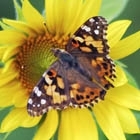



 Imperial Bedroom
Imperial Bedroom Portrait Hall
Portrait Hall Mauve Room
Mauve Room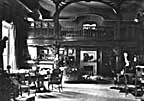 Maple Room
Maple Room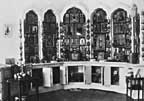 Aleksey's Bedroom
Aleksey's Bedroom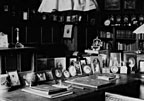 Nicholas's Study
Nicholas's Study Aleksey's Playroom
Aleksey's Playroom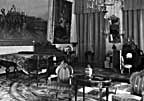 Formal Reception
Formal Reception Balcony View
Balcony View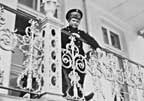 Aleksey- Balcony
Aleksey- Balcony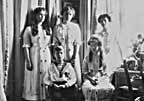 Children-Mauve
Children-Mauve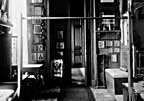 Nicholas's Bathroom
Nicholas's Bathroom Alexandra- Mauve
Alexandra- Mauve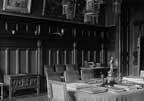 Nicholas's Reception
Nicholas's Reception Tsarskoe Selo Map
Tsarskoe Selo Map